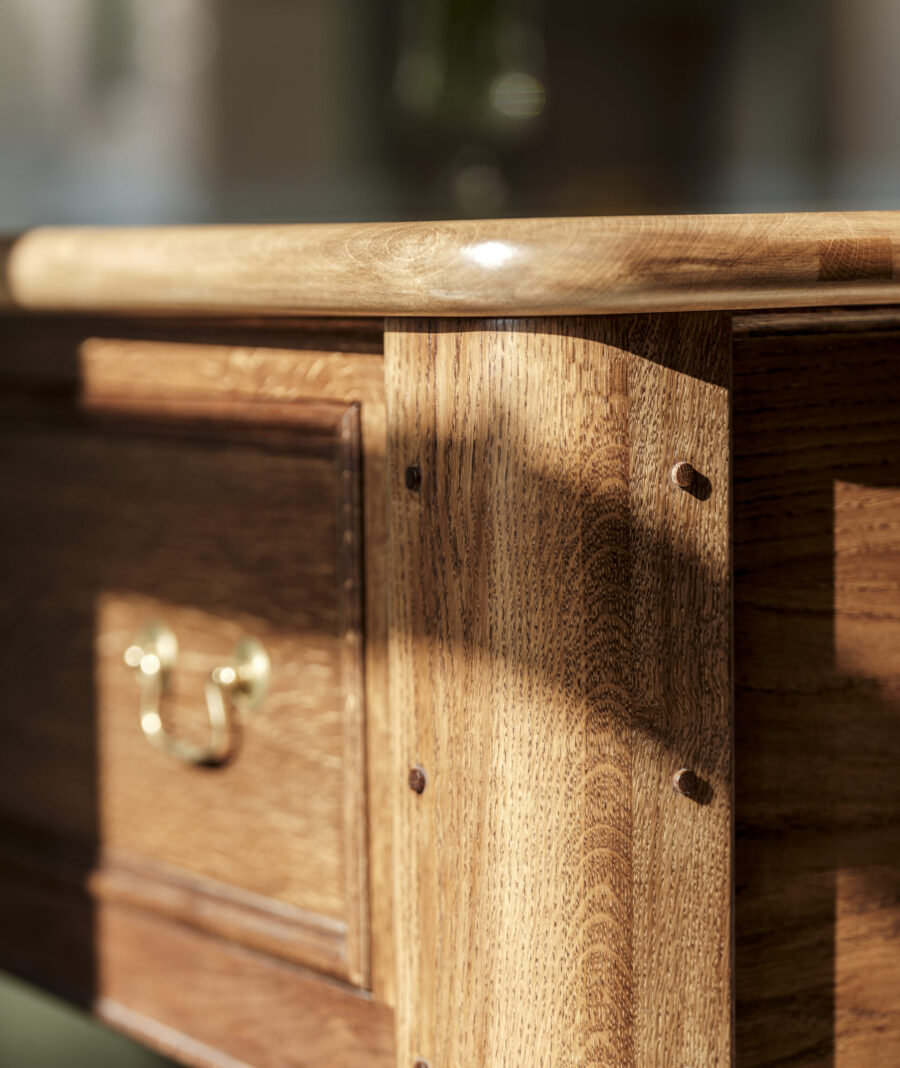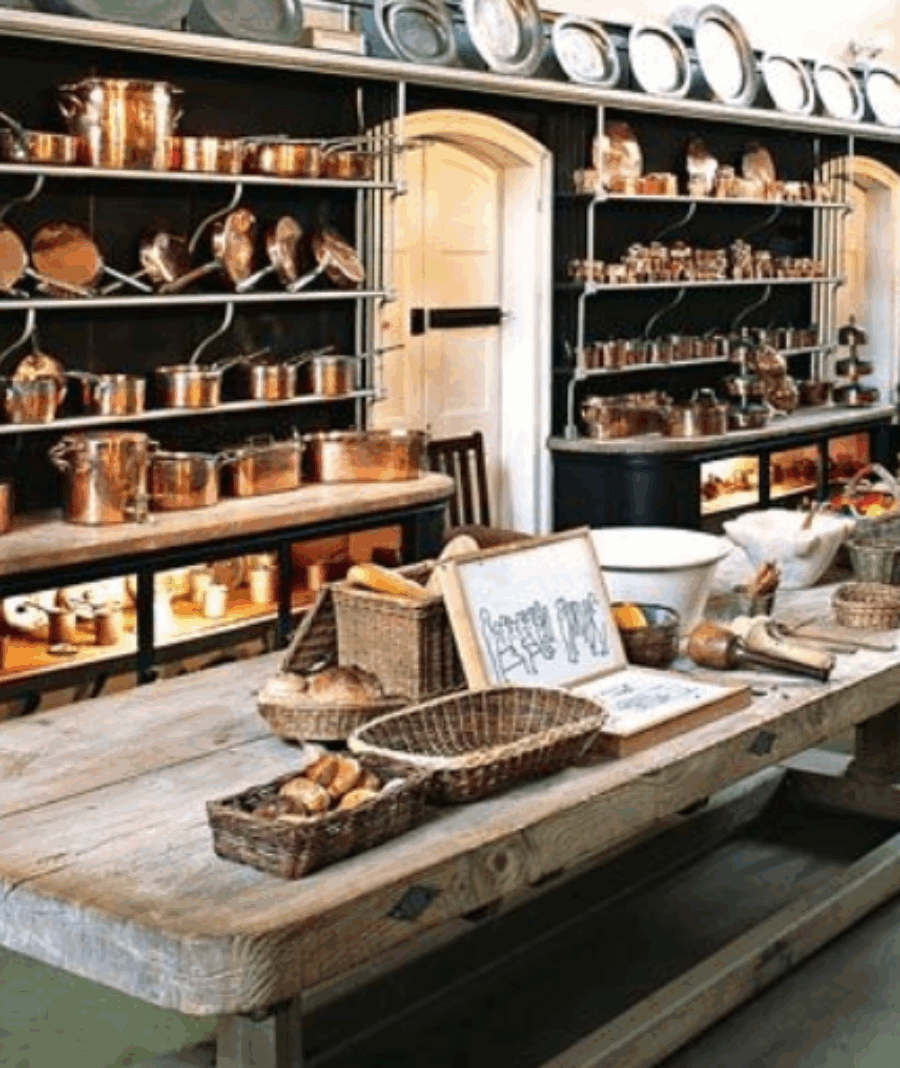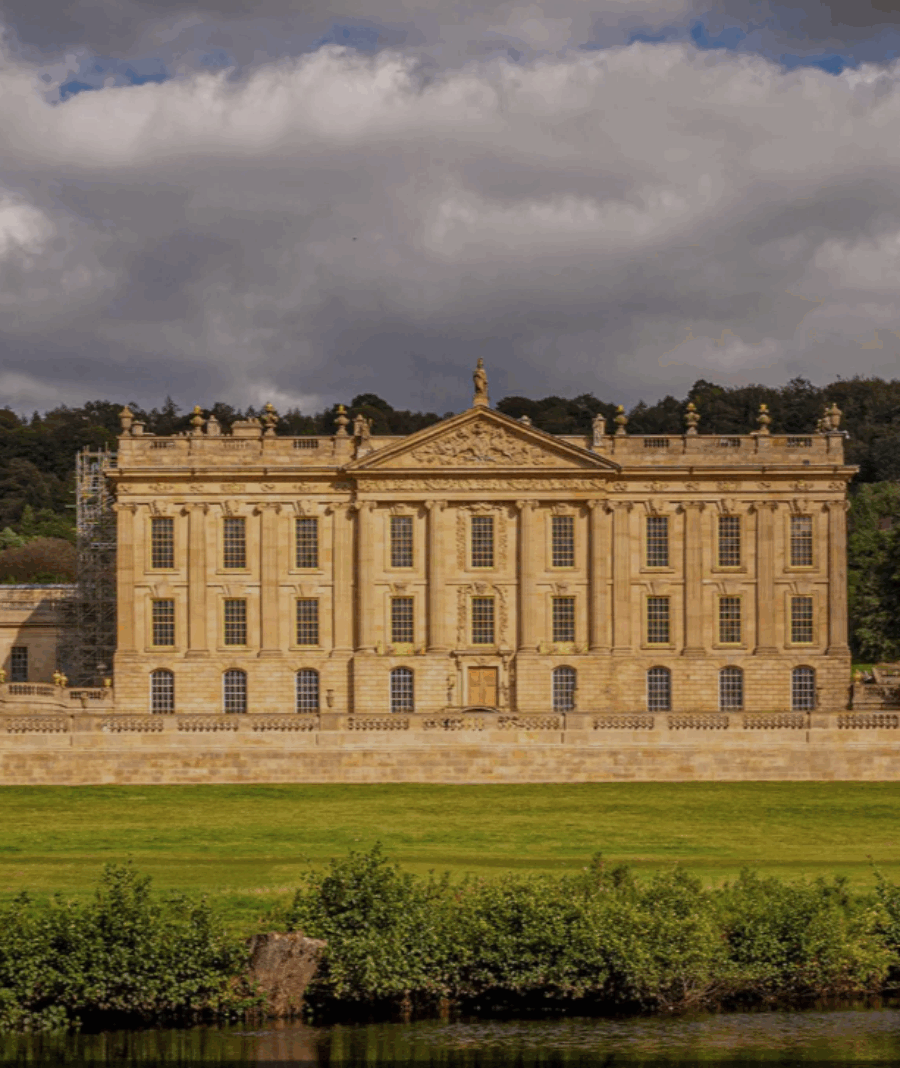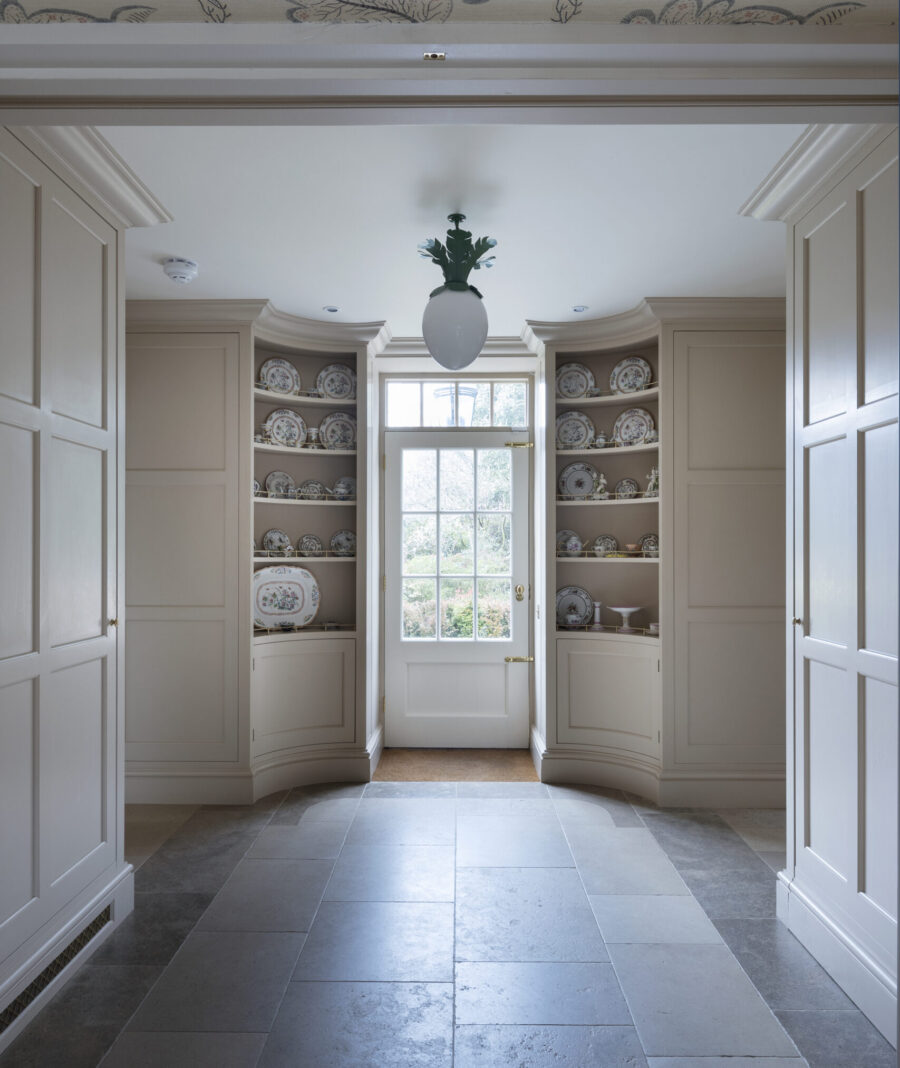Journal
Hiding quietly behind the grand facades of English country houses lies the unsung hero of our lived-in architectural heritage; the work of the estate joiner. While the spotlight often rests on the architect responsible for these buildings, it was the sensitive, understated design and skilled hands of the estate joiner which brought them to life.
Chiefly restricted to the domestic wings and rooms of utility such as kitchens, pantries, sculleries and boot rooms, the work of the estate joiner defined not just how these houses looked, but how they functioned.

ESTATE CABINETRY – IN PRAISE OF THE ESTATE JOINER
We have been fascinated by the work of the estate joiner ever since we were commissioned to renovate the Butler’s pantry at The National Trust’s Buscot Park in Oxfordshire over fifteen years ago.
While our focus at Guild Anderson remains as estate cabinetry (a specialist subset of estate joinery), the estate joiner was responsible for a wide variety of woodwork in houses of all sizes, from the humble keeper’s cottage to the main estate house itself. They were mostly in the permanent employ of the estate, and their focus went beyond cabinetry to windows, joinery doors, skirtings and architraves.
We are not on the permanent staff of any particular estate, although we are based on the 9,000 acre Fonthill Estate in Wiltshire, and currently undertaking a project for the family.

INSPIRATION
On the other side of the country to Fonthill lies Norfolk’s Holkham Hall and its accompanying estate houses. Behind its Palladian grandeur sits a network of service rooms with joinery which remains largely unchanged since the 18th century.
The Butler’s pantry, fitted with deep drawers, plate racks, and perfectly proportioned cabinetry, is a testament to the joiner’s eye for both detail and durability.
These were not mass-produced items of furniture, but bespoke creations tailored to both the specific needs of the household and to the character of the house itself.

BACK OF HOUSE SPACES
At Chatsworth, the boot room features classic bench seating, pegs, and under-seat storage, all crafted in solid oak from the estate itself. These rooms weren’t showpieces. They were functional, mud-friendly zones for everyday use. These back of house rooms were built with the same pride and permanence as the front of house spaces.
This is what inspires us. This is what gets us out of bed, and this is what sits at the core of Guild Anderson’s DNA.
Not the imposing classical libraries made by the expensive London cabinet makers, but the humble domestic spaces designed to maximise the daily efficiency of those cooking, cleaning, running and managing the household.

CELEBRATING BRITISH ARCHITECTURE
Today, many of the details found in these houses are being revived in new bespoke kitchens and utility spaces.
Modern country houses still look to the past for inspiration, often seeking to emulate the charm and craftsmanship of estate joinery.
In celebrating British architectural heritage, we must not forget the estate joiner. Their work, though often anonymous, continues to shape the way we live (and the way we dream of living) in country homes of all sizes.


